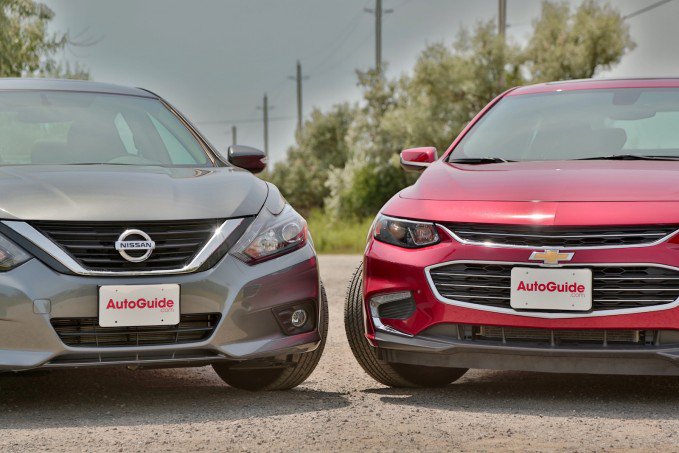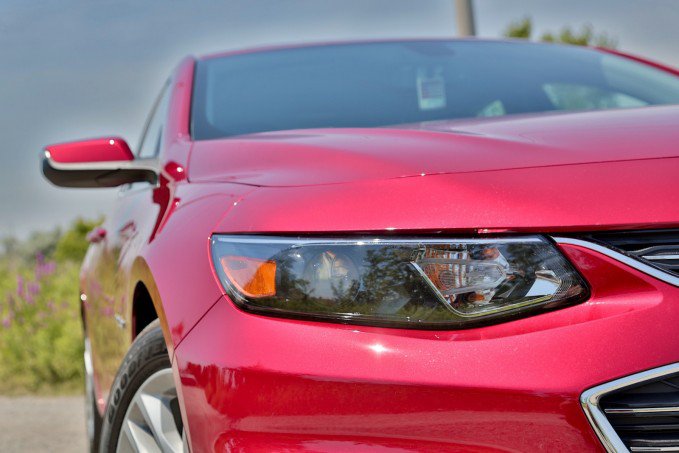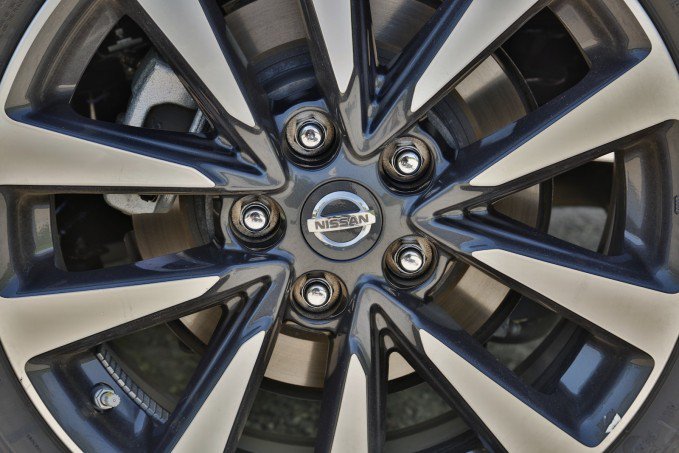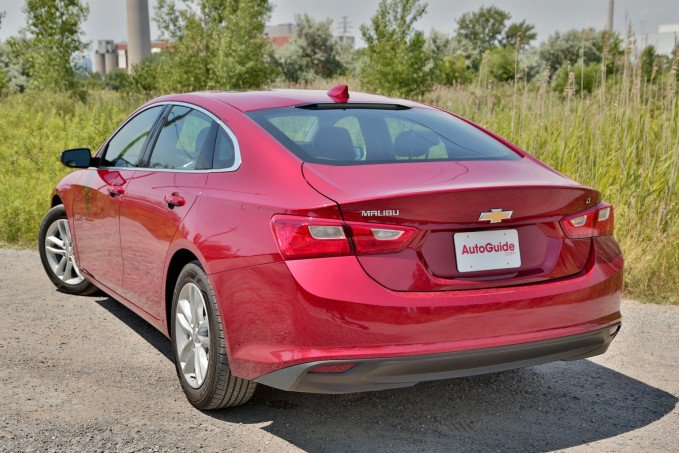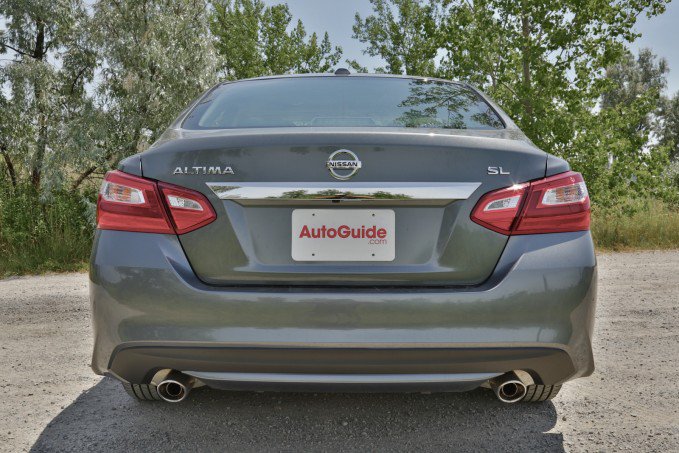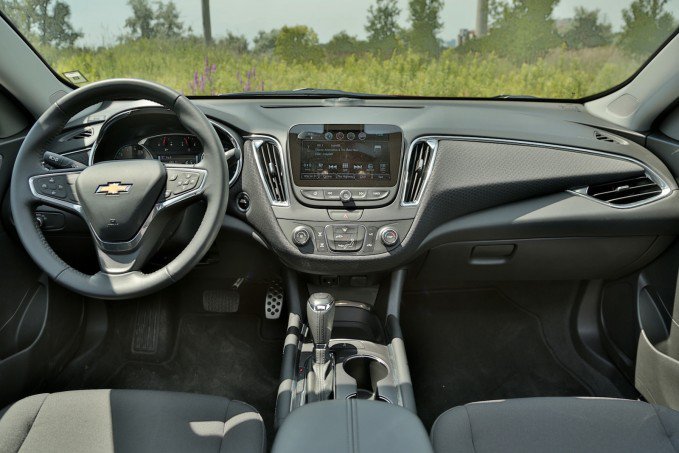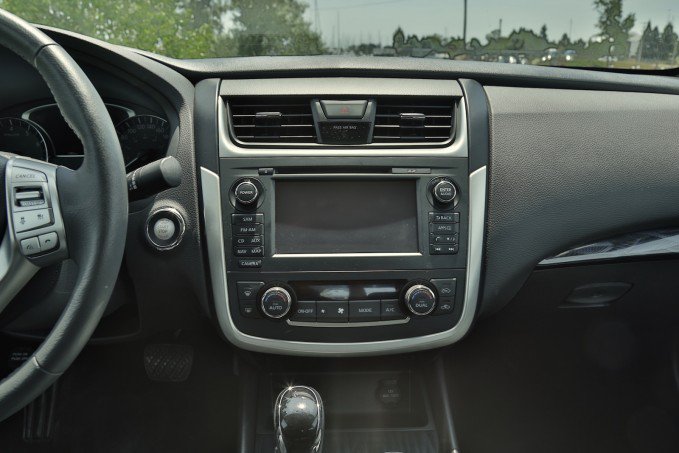The Chevrolet Malibu is all-new for 2016, while over at Nissan, a massive mid-cycle refresh arrived for the Altima. They’re both decent family sedans, offering a comfortable, familiar ride, although one manages to inch ahead and emerge as the better pick. Let me tell you why.
First, what’s new with these cars? For 2016, the Altima has received what Nissan says is one of its biggest mid-cycle refreshes ever, bringing fresh looks, new technology, and tuned driving dynamics that sharpen the handling.
Chevy, on the other hand, completely reengineered the Malibu, giving it an all new face, a reshaped interior, more engine options, and a lighter curb weight, with about 300 pounds shaved off of most the Malibu’s trim levels. As for those engine options, a new 1.5-liter turbocharged four-cylinder engine has been introduced as the base option, while a new Malibu hybrid is also available.
Chevy is looking to take its Malibu from a has-been to a star, while Nissan is working proactively to keep its share of the midsize sedan pie. So which makeover works better? Let’s start by looking at how these cars drive.
Get the Flash Player to see this player.
The Drive
The drive here is totally predictable for both cars. Steering in the Malibu has a little bit more weight and feedback to it, while the Chevy also manages to feel lighter through corners. That’s not to say the Altima is bad, because really, the difference between the way these cars drive is so minute.
Even when it comes to comfort, it is once again very hard to pick a better car. Both the Altima and Malibu offer a smooth ride, even over rough pavement. When it comes to isolation from the outside, the Chevrolet seems to have a slight edge, with a little more tire roar coming from the Nissan.
What’s important for most drivers who will get behind the wheel of these cars is that both are simple to drive. Sight lines are unobstructed, the seating positions are nicely set and the agreeable driving dynamics set the driver up for a comfortable drive.
A lot goes into making cars drive this well, but most of that work goes unnoticed. That’s because the point of a great midsize sedan is to have it perform well in all conditions while providing a perfectly safe (read: forgettable) drive.
Both of these cars pull it off with ease.
Opposites Face Off
Powertrain differences are certainly apparent, though, with both Chevy and Nissan taking two different approaches. In our test Altima, a 2.5-liter four cylinder hooked up to a CVT provides 182 horsepower and 180 lb-ft of torque at 4,000 rpm. Those seeking more power can bump up a 3.5-liter V6 that makes 270 hp and 251 lb-ft of torque, though the four
banger provides more than enough power for a vehicle in this class.
Nissan has to be given credit for making a pretty good CVT. Off the line, power is immediate, while high in the rev range, the transmission drops rpms and doesn’t drone on waiting for the car to catch up.
The Malibu actually has about 20 less horsepower than the Nissan, but you would probably never know. Powering the Chevy is a turbocharged 1.5-liter four cylinder that’s new for 2016 that easily feels as powerful as the Altima’s engine, thanks in part to its 184 lb-ft of torque that comes on at 2,000 to 4,000 rpm. Best of all, power feels quite linear and turbo lag isn’t apparent.
Fuel economy is pretty evenly matched, with the Altima beating the Malibu by 2 mpg on the highway, likely thanks to its CVT. Both cars are rated to return 27 mpg in the city, which is a little closer to the truth. We found that over the same 62-mile commute into and out of a major city, both cars managed to return between 26 and 27 mpg.
Moving Inside
When it comes to style, the edge goes to the Malibu, at least in my eyes. Inside, this car is a nice place to be, with a more expressive style than the Altima. Features like the material on the dash, which can be leather in higher-trimmed cars, feels good to touch and ties the whole interior together nicely. The front seats in the Chevy feel comfortable and slightly more contoured than the Nissan’s flat front seats.
That’s not to say that the Altima’s seats aren’t comfortable, though, providing a nice cushy feel. Functionally, the Nissan works fine as well, the issue here is simple: it’s boring.
The Altima offers a plain interior with less style and flair compared to the American car, though, admittedly, that’s what some are looking for.
This is the family sedan segment, so the backseat and trunk are big selling features. The Malibu offers exactly two inches of extra legroom than the Nissan with 38.1 inches, plenty to seat an adult. While the extra legroom was appreciated and noticeable in the Malibu, the Chevy also has slightly more contoured back seats, which can be a little more uncomfortable for larger people.
When it comes to the trunks, the Malibu takes the edge by less than half of one cubic foot, measuring in at 15.8 cubic feet. In practice, the difference is negligible and each offers plenty of cargo space.
Tech
New technology arrived for both cars this year, but the Altima’s suite of driver assistance features is definitely the more impressive setup. Our Altima came outfitted with all the latest driver’s aids, including adaptive cruise control and something Nissan calls Predictive Forward Collision Warning. This system allows the car to look two cars ahead to predict what is going to happen in traffic. This fancy radar technology also helps the adaptive cruise system, which is one of th
e smoothest systems available. It reacts quickly, but not abruptly like some can.
On the Altima 2.5SL, all that technology is part of a $2,190 package. On the Malibu 1LT that we tested, all of its safety tech costs $1,195, but it’s also not as good.
Our tester didn’t come equipped with the driver confidence package fitted, which brings along auto high beams, blind-spot monitoring, land keep assist, forward collision warning and more. But no adaptive cruise, and certainly no systems that look two cars ahead.
To be clear, adaptive cruise control is available on the Malibu as well, but only on the top Premier trim. Altima buyers are granted access to the technology lower down in the lineup.
Compare Specs
So how about interior technology? Well, infotainment in both of these cars is upgraded and both offer competent operation, though things are easier with Chevrolet’s MyLink. Four nice-feeling rubber-wrapped buttons on the steering wheel can control all of its major functions, while the touchscreen itself has fewer buttons than the Nissan and is quicker and more intuitive.
Pricing
At the very base level, you’ll be paying a little more for the Altima, which is the same story once you load them up. A basic Malibu costs $22,555, while a base level Nissan Altima leaves the dealership for $23,335. At the top end, the Malibu Premier sells for $32,725, while the Altima 3.5 SL sells for $33,525. This story of the Altima edging out the Malibu in price is a constant throughout the lineup. All these prices include destinations costs.
In Canada, the story is much the same, with the base Malibu selling for $21,745 not including delivery while the Altima starts at $23,998, also not including destination charges. Spring for the top-trim Altima 3.5 SL and you’re looking at spending $35,498, while the Malibu Premier will leave the dealership for $32,045.
North of the border the Malibu offers even more value, but in each case, the Chevrolet proves itself to be the cheaper car.
The Verdict: 2016 Chevrolet Malibu vs Nissan Altima
What we have here is almost a tie. Two nice handling, well-equipped family cars that offer a solid amount of features for about $30,000. But in the end, it comes down to the car that offers a little more space for the family, a little more value and a bit more style: the Chevrolet Malibu.







